The share of young adults in New York City who are jobless and out of school has fallen over the past five years, according to a new report, owing partly to a rebounding economy and higher college enrollment.
But roughly 17 percent of young adults ages 18 to 24, or more than 136,000 people across the city, are still considered “disconnected” — both out of school and out of work.
That’s according to a new report jointly released by the Community Service Society and JobsFirstNYC, which have closely tracked young people who neither work nor go to school. The report is a follow-up to a similar study the two organizations conducted in 2010 as the country was still reeling from the recession.
The latest report offers a more encouraging picture. But it also reveals some worrying trends: More young adults have jobs, but they’re mostly part time. A larger number of students are enrolling in college, but they also often leave before earning a degree. Moreover, the young adults who are still out of school and jobless are likely even harder to serve.
“The out of school/out of work population is much smaller but there are also higher barriers to success,” said Lazar Treschan, a youth policy expert at the Community Service Society and one of the report’s authors.
Here are six pieces of data from the report that show who is out of school and out of work — and some of the biggest challenges they face.
1. The proportion of young adults who are out of school and out of work has been trending downward since the recession. Seventeen percent of the city’s young adults were jobless and out of school in 2015, down from 22 percent in 2010.
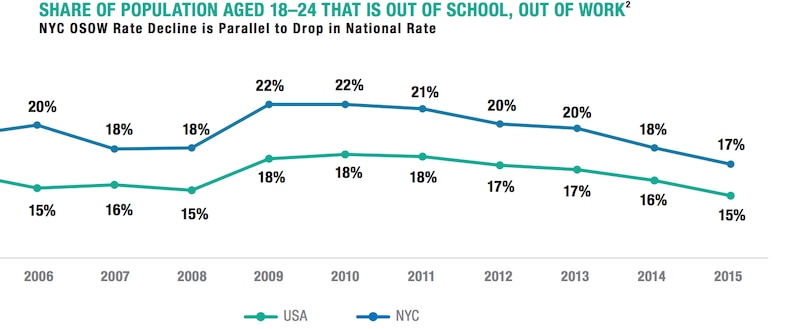
2. The share of disconnected young people has been falling for every racial group, but black and Latino students are still more than twice as likely to be out of school and jobless than their white and Asian peers.
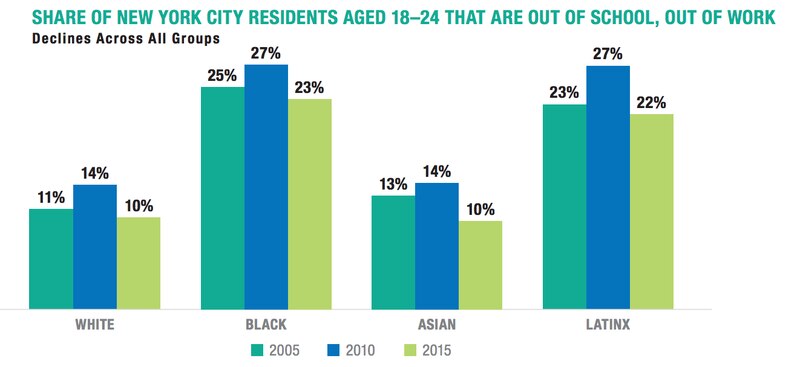
3. A big reason fewer young adults are out of work is the economy is improving. But most of the job growth has been in part-time employment, jobs that are lower-paying and come with fewer benefits. “Despite overall job growth, there has been no net increase whatsoever in full-time jobs for 18- to 24-year-olds,” the report notes.
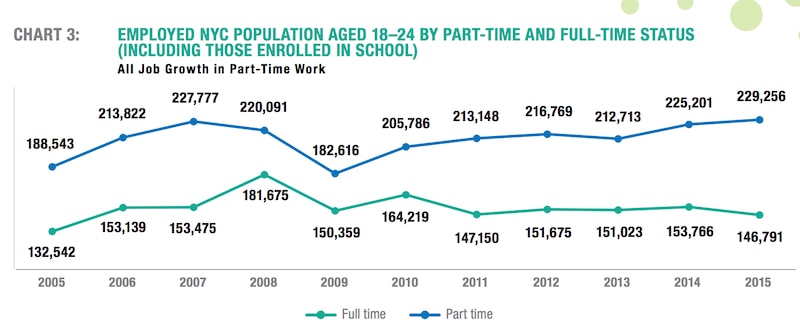
4. The percentage of the city’s students who are over 18 and still in high school has been falling — and the biggest drops are among students from low-income families, according to the report.
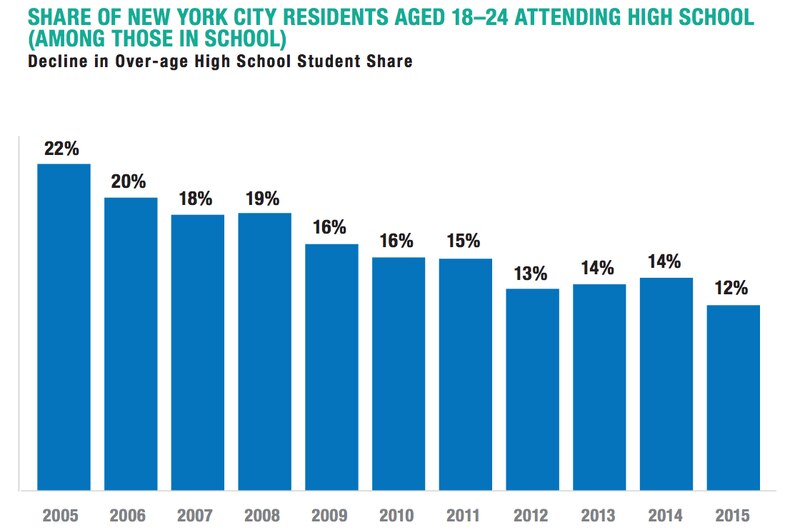
5. College readiness rates have increased, and more young adults are going to college. But many of them are going to college without earning degrees, potentially leaving them in debt. The number of young adults “who have started college but left before completing any type of degree has grown from under 50,000 in 2005 to nearly 70,000 today,” according to the report.
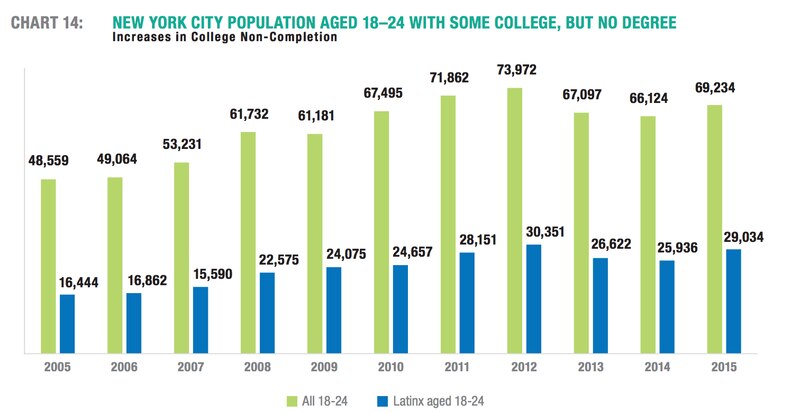
6. The young adults who continue to be out of school and jobless are harder to serve. Kevin Stump, a vice president at JobsFirstNYC who contributed to the study, noted that the young adults who have not found jobs or enrolled in school during the economic recovery “are harder to find and face even more difficult barriers.”
Though the report doesn’t present hard data to back up that assertion, its authors interviewed service providers who “cite a higher concentration of young people with low levels of literacy, mental health concerns, histories of trauma, criminal justice involvement, and severe housing instability in their programs today than five years ago,” according to the report.
You can read the full report and its recommendations here.


